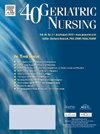使用RE-AIM框架评估老年人实施互联网+康复护理的促进因素和障碍:一项定性研究
IF 2.4
3区 医学
Q3 GERIATRICS & GERONTOLOGY
引用次数: 0
摘要
目的探讨互联网+康复护理服务实施的促进因素和障碍。设计:描述性定性研究。方法采用目的抽样方法,选取从事互联网+康复护理服务的康复护士作为研究对象。以RE-AIM框架为指导,制定了采访大纲。采用面对面的半结构化访谈。结果我们从五个方面确定了关键的促进因素和障碍。在可及性维度上,促进因素包括需求高、经济状况好,障碍包括康复意识弱、不信任。在有效性方面,促进因素包括教学的可及性和便捷性、服务的可接受性和满意度以及解决护理问题,而依从性低是主要障碍。在采用方面,促进因素包括提高医院知名度和年轻护士是主要因素,而工作-家庭冲突和不规范的培训被认为是障碍。实施维度有两个促进因素:两人诊所访问和有助于降低环境风险,以及三个障碍:高成本、医院低盈利能力和订购软件功能差。最后,在维持维度上,促进因素包括专业机构或部门的设立和国家政策的持续支持,阻碍因素包括排除在医保报销之外和形式主义。结论未来的研究应更多关注互联网+康复护理服务的采用、实施和维持维度的评价。结果为实施互联网+康复护理服务提供循证建议。它为如何在中国实现该服务提供了一个新的视角。本文章由计算机程序翻译,如有差异,请以英文原文为准。
Evaluating facilitators and barriers to the implementation of internet +rehabilitation nursing among older adults using the RE-AIM framework: A qualitative study
Aims
To describe the facilitators of and barriers to the implementation of internet+rehabilitation nursing services.
Design
A descriptive qualitative study.
Methods
A purposive sampling method was used to select rehabilitation nurses involved in internet+rehabilitation nursing services as the study subjects. An interview outline was developed based on the RE-AIM framework as a guide. Face-to-face, semi-structured interviews were used.
Results
We identified key facilitators and barriers in five dimensions. In the reach dimension, facilitators included high demand and good economic status, while barriers included weak awareness of rehabilitation and distrust. For effectiveness, facilitators comprised accessible and convenient teaching, acceptability and satisfaction of services, and solving care problems, whereas low compliance was the primary barrier. In the adoption dimension, facilitators included increased hospital visibility and young nurses being the mainstay, while work-family conflicts and unstandardized training were identified as barriers. The implementation dimension had two facilitators: two-person clinic visits and helpfulness in reducing environmental risks, alongside three barriers: high costs, low profitability of hospitals, and poor functionality of ordering software. Finally, in the maintenance dimension, facilitators included the establishment of specialized institutions or departments and continuous support from national policies, while barriers included exclusion from Medicare reimbursement and formalism.
Conclusions
Future studies should pay more attention to the evaluation of the adoption, implementation, and maintenance dimensions of internet+rehabilitation nursing services. The results offer evidence-based recommendations for putting internet+rehabilitation nursing services into practice. It provides a new perspective on how to implement this service across China.
求助全文
通过发布文献求助,成功后即可免费获取论文全文。
去求助
来源期刊

Geriatric Nursing
医学-护理
CiteScore
3.80
自引率
7.40%
发文量
257
审稿时长
>12 weeks
期刊介绍:
Geriatric Nursing is a comprehensive source for clinical information and management advice relating to the care of older adults. The journal''s peer-reviewed articles report the latest developments in the management of acute and chronic disorders and provide practical advice on care of older adults across the long term continuum. Geriatric Nursing addresses current issues related to drugs, advance directives, staff development and management, legal issues, client and caregiver education, infection control, and other topics. The journal is written specifically for nurses and nurse practitioners who work with older adults in any care setting.
 求助内容:
求助内容: 应助结果提醒方式:
应助结果提醒方式:


